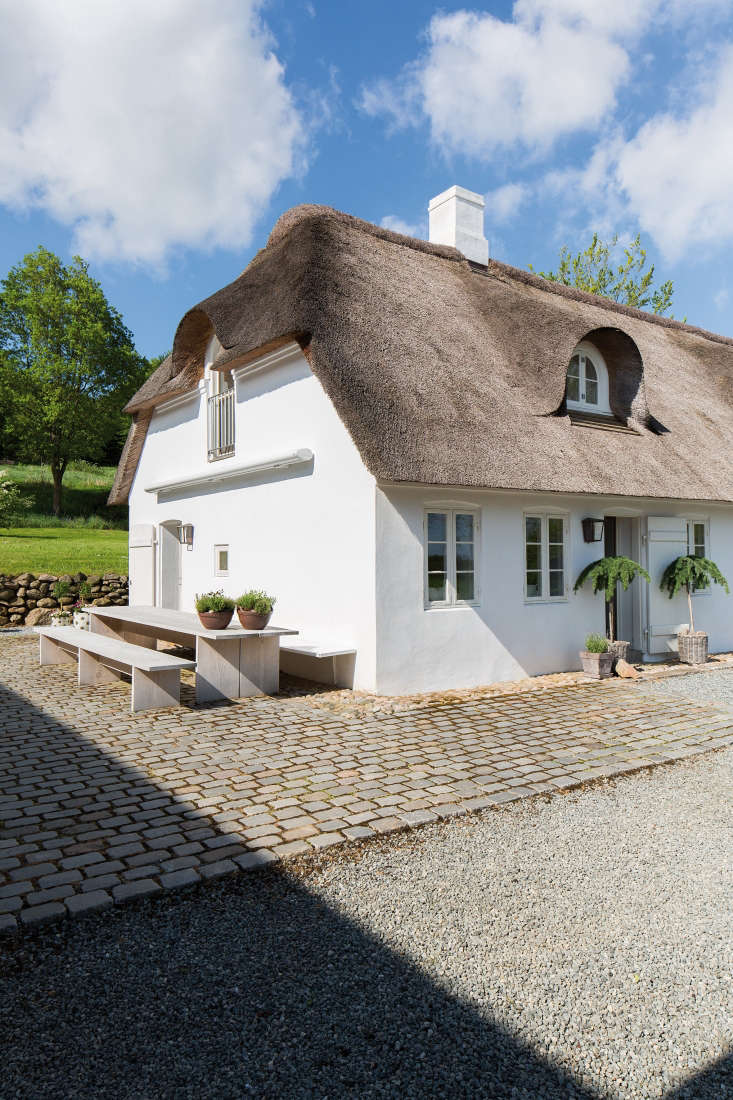All across Britain quaint cottages are topped in thatched roofs; it’s an ancient craft that’s central to the chocolate-box image of old England and that dates back to the Bronze Age, when thatch—which consists of densely packed grasses—was a lightweight, accessible material to keep stone or wattle and daub houses warm and water-tight. Even grand structures were sometimes topped in thatch (in 1300 a Norman castle in Pevensey, Sussex used six acres of rushes to create a roof).
And little of the thatching technique has changed since then. Houses in other European countries, including France and Denmark, feature thatched roofs. In tropical climates, thatched roofs of straw and palm fronds are typical. Thatched public buildings including schools and churches are still a common site in East Anglia, and on Remodelista we recently featured a remodeled Danish longhouse with a dramatic thatched roof.
Is a thatched roof a choice for you? Read on for everything you need to know:
What materials are used in thatched roofs?

Materials vary in different areas —broom, sedge, heather and flax can all be used for thatching but most common in Europe are straw or reeds, especially in East Anglia where Norfolk reeds provided the most prized roofing material of all— it lasts the longest too.
In tropical climates, such as Fiji, thatched roofs may be made of palm fronds. In Hawaii, perennial grasses such as Imperata cylindrica and Heteropogon contortus are used in thatched roofs.
How is a thatched roof made?

Each bundle of thatch is laid with the flower ends of the reeds or straw, facing up and fixed into place temporarily with an iron pin.

As each bundle is added the thatcher bashes it in with a flat-faced metal “leggett” to create a smooth finish. The thatch is then fixed into place with permanent hazel ‘spars’, a thatching wire is used across the top to prevent bird damage, and the ridge line is finished with a deeper layer of thatch which is often cut into decorative styles, which vary area to area. In different regions there are also different styles of thatching around eves and dormers too.

In England even new build houses and outbuildings have thatched roofs – they add an instant historic and period feel – but it’s the traditional cottages of rural counties where it looks most at home.
How much does a thatched roof cost?

A thatched roof may add a big premium to the value of your property but it also comes at a cost. It’s a major expense (costing up to £25,000 or $33,000 for a complete re-thatch in the UK).
What is the lifespan of a thatched roof?

Most thatches will need to be replaced every 30 years but the lifespan of a thatched roof depends on material, geographical location (humidity plays a bit part in how quickly a thatch will degenerate) and how well it was installed in the first place.
Are thatched roofs a fire risk?
The risk of fire is no different to a normal house although if there is a fire a thatch will go up in flames in a flash and a poorly lined flue is often the culprit. It is, of course, advisable to keep bonfires well away from thatched homes too.
N.B.: Are you considering a roofing project? See more styles and types of roofs:
- Tesla Solar Roof: Is It Worth It?
- Hardscaping 101: Solar Panels Pros and Cons.
- Hardscaping 101: Slate Roofing Tiles.
- Hardscaping 101: Standing Seam Metal Roofs.









Have a Question or Comment About This Post?
Join the conversation